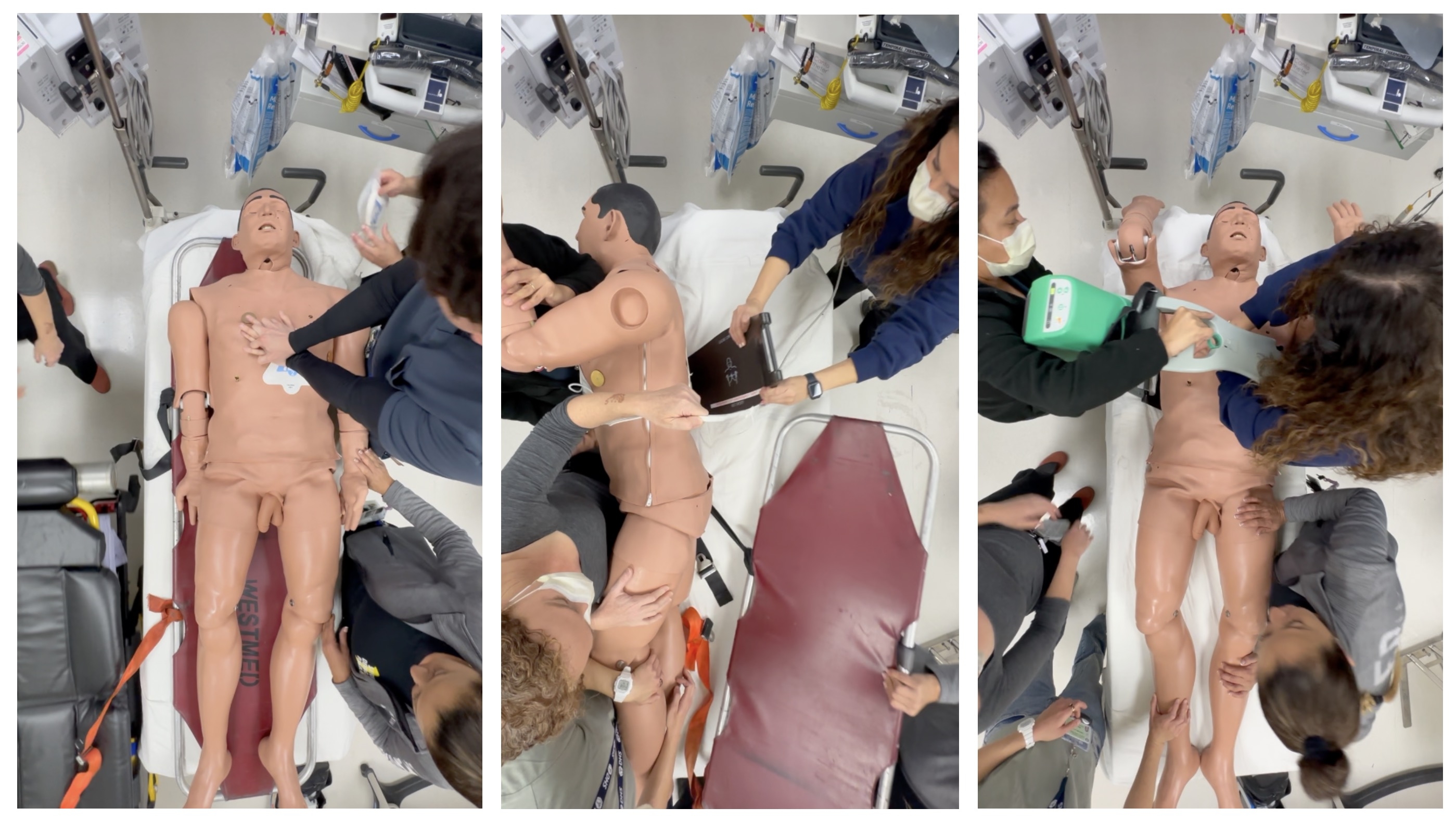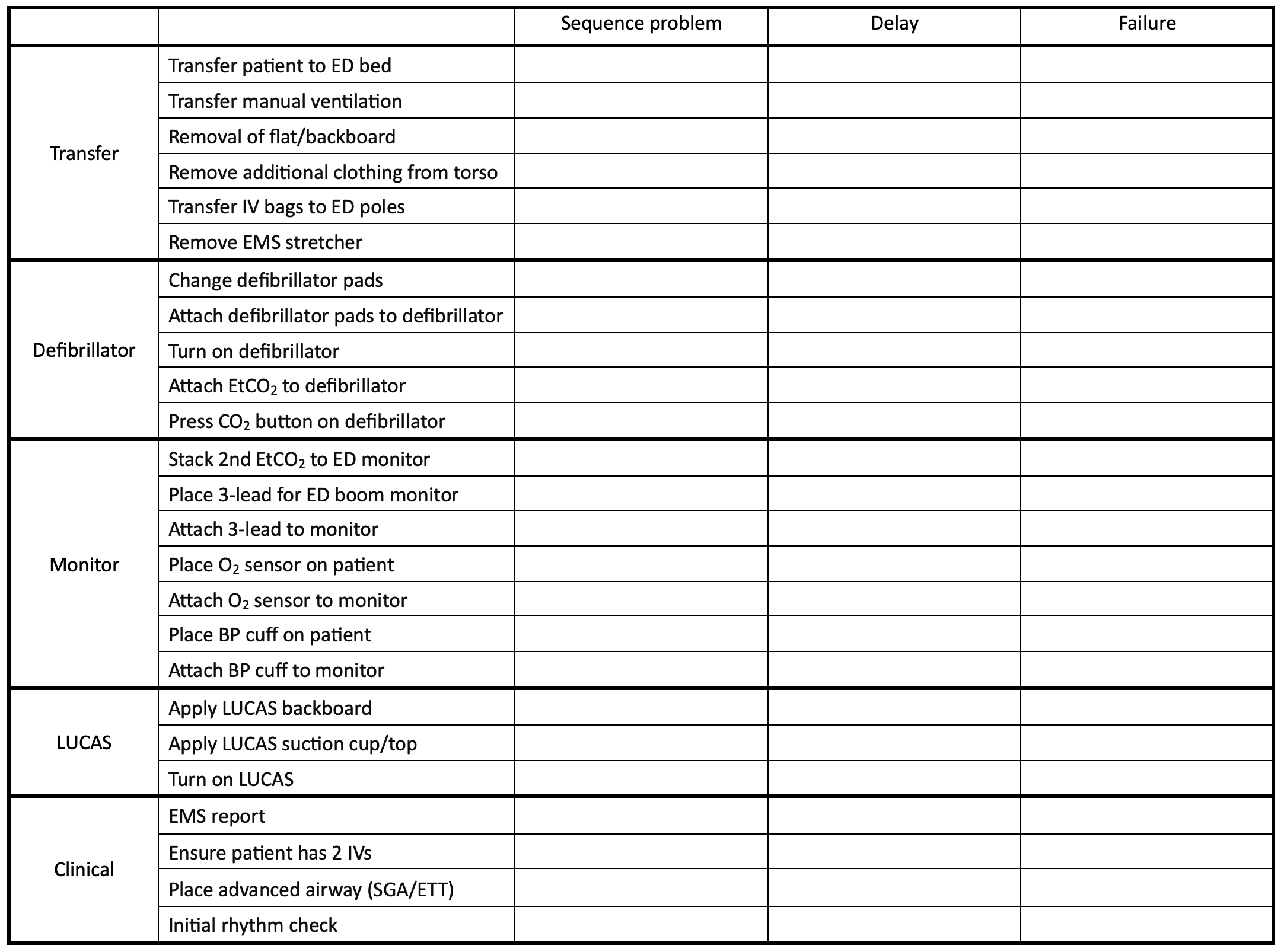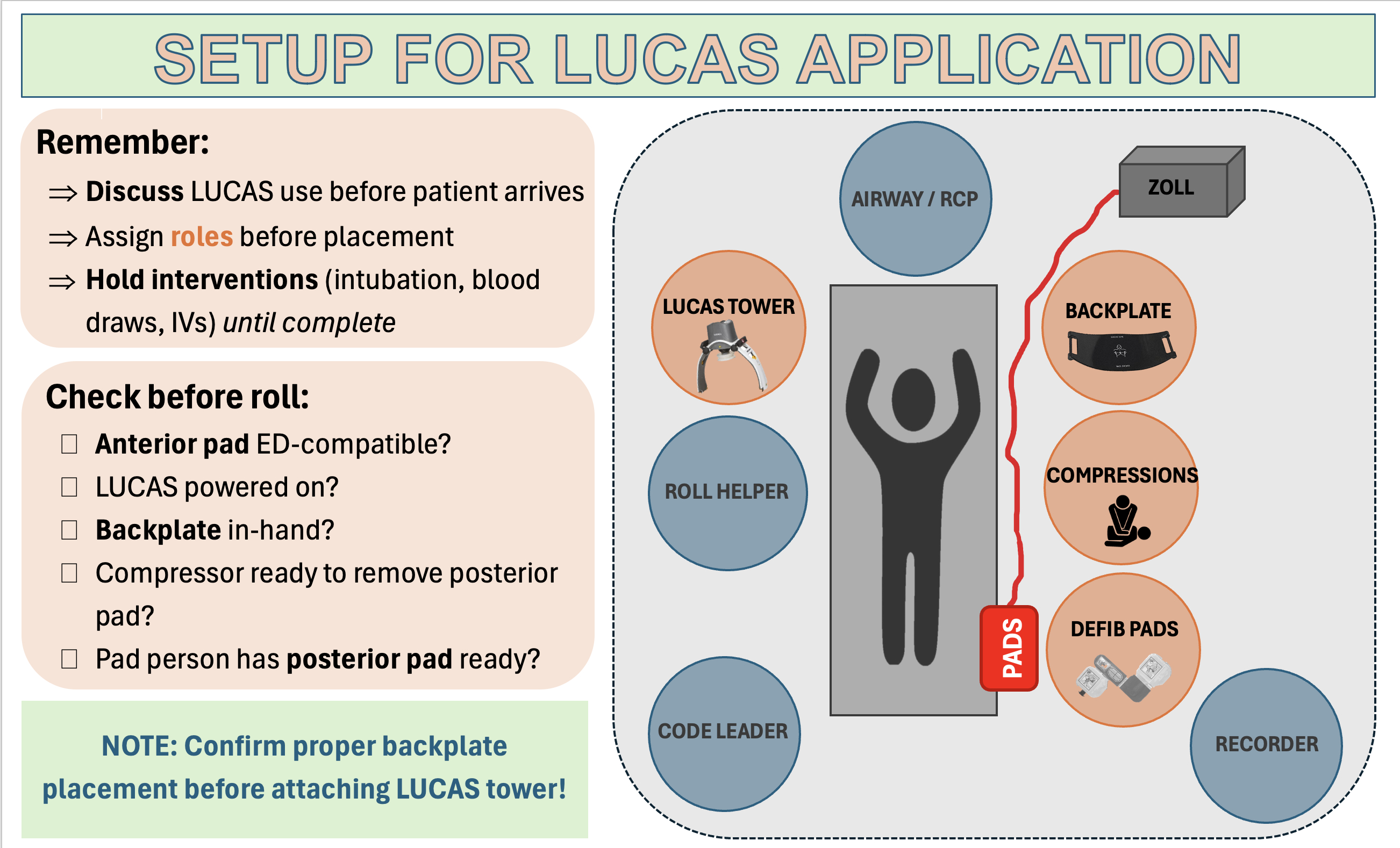Final ID: Su403
Iterative Simulation to Optimize Mechanical CPR Device Application
Abstract Body: Mechanical chest compression devices (MCDs) are commonly used for in-hospital and emergency department (ED) cardiac arrest resuscitation. Manufacturer guidelines and educational materials demonstrate that in the prehospital setting, MCDs can be deployed with an interruption in CPR of less than 15 seconds. No similar materials exist for the in-hospital environment, where observational studies have noted median CPR interruptions of up to 40 seconds for MCD deployment. With the integration of extracorporeal CPR (eCPR) into OHCA systems of care, the need to transfer patients with ongoing CPR to MCDs in the ED is growing.
To develop a hospital-specific procedure for receiving a patient in cardiac arrest and deploying the MCD with minimal no-flow time.
We used an iterative participatory design process to develop a procedure for receiving patients in cardiac arrest from Emergency Medical Services (EMS). Tasks included transferring a patient, replacing defibrillator pads, and deploying the hospital MCD with minimal no-flow time. Participants including ED physicians, nurses, and respiratory therapists performed a series of simulations using a high-fidelity manikin, resuscitation equipment, and an MCD. Simulations were followed by focused debriefings, participant-directed modification of the working procedure, and repeat simulation until participants expressed satisfaction with the procedure. Participant roles were shuffled after each round. The primary outcome was the duration of CPR interruption required to deploy the MCD; change in this time over successive iterations was assessed using a Wilcoxon signed-rank test. The final procedure described a sequence of steps and responsibilities that participants deemed efficient and reproducible.
Through seven simulation-debriefing cycles, CPR interruption associated with MCD deployment decreased from 19 to 10 seconds (p = 0.033). The most common failure modes that participants corrected during modifications involved needed equipment that was out of reach, obstructed provider positioning, and poorly defined roles. On subsequent days, two additional groups of on-shift ED providers deployed the MCD in less than 15 seconds following the developed procedure.
Using an iterative design process, we created an MCD deployment procedure that minimized CPR interruptions and was acceptable to hospital staff. This represents an effective, low-cost methodology to design a process for transfer of care during CPR and MCD deployment.
To develop a hospital-specific procedure for receiving a patient in cardiac arrest and deploying the MCD with minimal no-flow time.
We used an iterative participatory design process to develop a procedure for receiving patients in cardiac arrest from Emergency Medical Services (EMS). Tasks included transferring a patient, replacing defibrillator pads, and deploying the hospital MCD with minimal no-flow time. Participants including ED physicians, nurses, and respiratory therapists performed a series of simulations using a high-fidelity manikin, resuscitation equipment, and an MCD. Simulations were followed by focused debriefings, participant-directed modification of the working procedure, and repeat simulation until participants expressed satisfaction with the procedure. Participant roles were shuffled after each round. The primary outcome was the duration of CPR interruption required to deploy the MCD; change in this time over successive iterations was assessed using a Wilcoxon signed-rank test. The final procedure described a sequence of steps and responsibilities that participants deemed efficient and reproducible.
Through seven simulation-debriefing cycles, CPR interruption associated with MCD deployment decreased from 19 to 10 seconds (p = 0.033). The most common failure modes that participants corrected during modifications involved needed equipment that was out of reach, obstructed provider positioning, and poorly defined roles. On subsequent days, two additional groups of on-shift ED providers deployed the MCD in less than 15 seconds following the developed procedure.
Using an iterative design process, we created an MCD deployment procedure that minimized CPR interruptions and was acceptable to hospital staff. This represents an effective, low-cost methodology to design a process for transfer of care during CPR and MCD deployment.
More abstracts on this topic:
Acceptability and Effectiveness of a Novel, Video-Based CPR and AED Education Program in Canadian Schools
Allan Katherine, Dhillon Santokh, Mcculloch Holly, Ruether Kim, Zotzman Jeanine, Blanchard Ian, Janczyszyn Mike, Wong Natalie, Oneil Emma, Sapp John
Educational support in the transitional care: a qualitative meta-synthesis of the experiences of caregiver-stroke survivor dyadsPetrosino Francesco, Bartoli Davide, Trotta Francesca, Vellone Ercole, Alvaro Rosaria, Pucciarelli Gianluca



